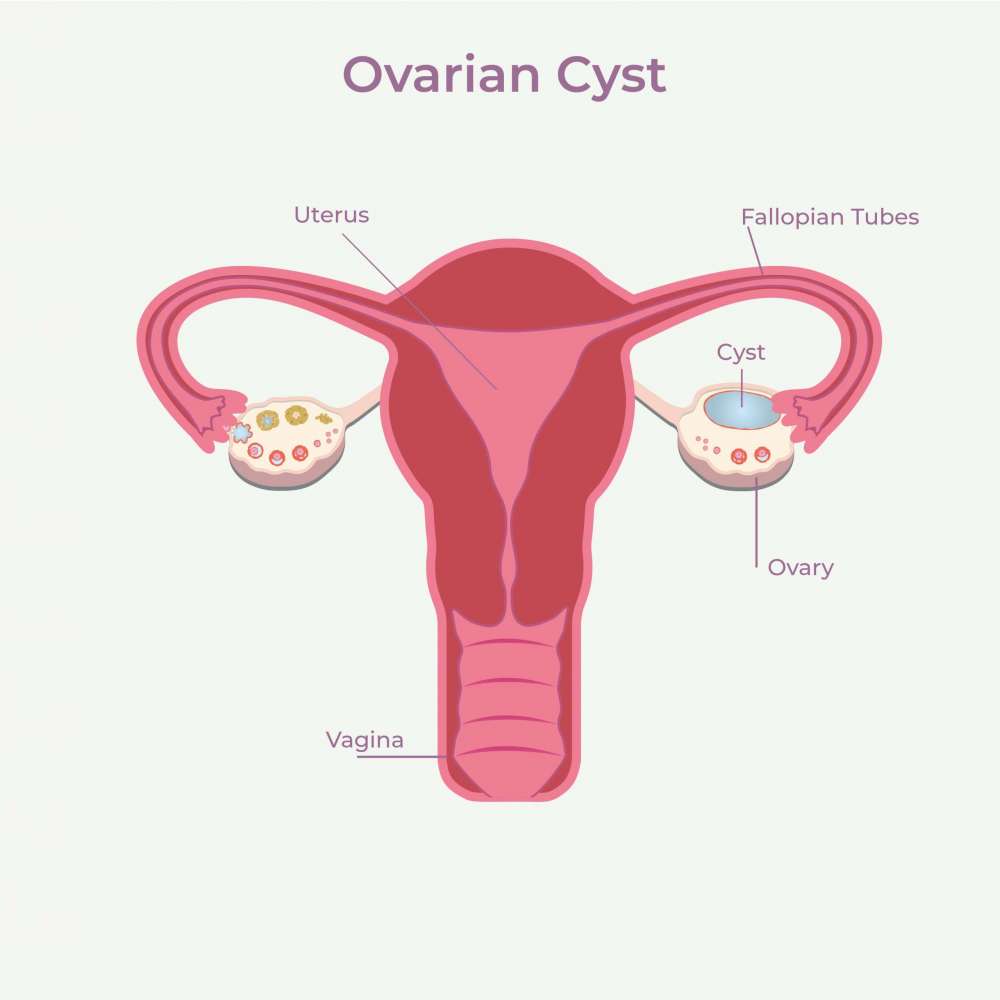
Sophia McCarthy
Operations Manager
Ovarian cysts are very common and do not usually cause any symptoms. Cedars-Sinai estimates that 10% of women experience ovarian cysts, with many not even realising they have one, as most ovarian cysts occur naturally and go away in a few months without needing any treatment.
What is an ovarian cyst?
In order to understand what an ovarian cyst is, let’s take a brief recap of what the ovaries are.
Most women are born with two ovaries, with each one on either side of the womb (or uterus). The ovaries are glands that normally measure roughly the size of a large marble. Their main job is to make and release eggs for fertilization and to generate estrogen and progesterone; hormones that ensure healthy development during puberty and to assist fertility.
The ovaries can become enlarged for many reasons, such as during your menstrual cycle. Every month, an ovary will develop a slight swell as it forms an ovum (egg). The ovum forms within something called a follicle (a small cyst).
An ovarian cyst occurs when a follicle does not release an egg, or does not discharge its fluid and shrink after the egg is released. This can results in the follicle swelling and becoming a cyst. An ovarian cyst is this fluid-filled sac that develops on the ovary.

What are some symptoms of an ovarian cyst?
If you do experience symptoms of an ovarian cyst that may not be resolving on its own, they most often present as the following signs:
– Pelvic pain – this can be a dull, heavy sensation or a sudden, severe and sharp pain.Pain during intercourse
– Difficulty emptying your bowels
– Needing to urinate more than usual
– Irregular periods or lighter/heavier periods than usual
– Bloating or swelling around the tummy, or feeling fuller after small amounts of food.
– Difficulty getting pregnant—however, it is important to note that fertility is usually unaffected by ovarian cysts
What are the different types of ovarian cysts?
Functional/Simple Cysts
Functional or simple cysts are the most common type of ovarian cyst and occur as a result of ovulation, and are essentially a monthly follicle that keeps growing. Functional cysts tend to resolve by themselves, shrinking over time, usually within 60 days, without intervention.
Corpus Luteum Cysts
The corpus luteum forms after the ovary releases an egg. When it fills up with fluid, it develops into a cyst.
Follicular cysts
A follicular cyst occurs when the ovary doesn’t release an egg during the month. The follicle fills with fluid, causing a cyst to form on your ovary.
Hemorrhagic Cysts
A hemorrhagic ovarian cyst is a type of ovarian cyst that bleeds.
Other Types of Cysts
Endometriomas
These are cysts that form out of endometrial tissue and are common in women who have endometriosis. The tissue of the endometrium is the lining in your uterus that is shed during your menstrual cycle.
Dermoid Cysts
Also called teratomas, dermoid cysts consist of various tissue types. These types of cysts develop from the reproductive cells of the ovary and can be composed of tissues like hair, teeth, and skin. This may sound concerning, but these cysts can be common, and make up about 20 percent of all abnormal growths found on the ovaries.
How are ovarian cysts diagnosed?
Ovarian cysts can be quickly and easily diagnosed by a radiologist using ultrasound imaging. Our Pelvic Scan is one of our most commonly requested referrals by GPs, and is often requested to rule out cysts and to provide follow-up monitoring on a cyst’s growth.
If you would like more information on anything covered in this post, you can get in touch via info@theultrasoundsuite.ie or send us a message on our Facebook page and we will get back to you as soon as possible. Our website www.theultrasoundsuite.ie also provides a wealth of information on our various policies and procedures.
REFERENCES AND FURTHER READING
Cleveland Clinic: Ovarian Cysts
National Library of Medicine: Ovarian Cysts
